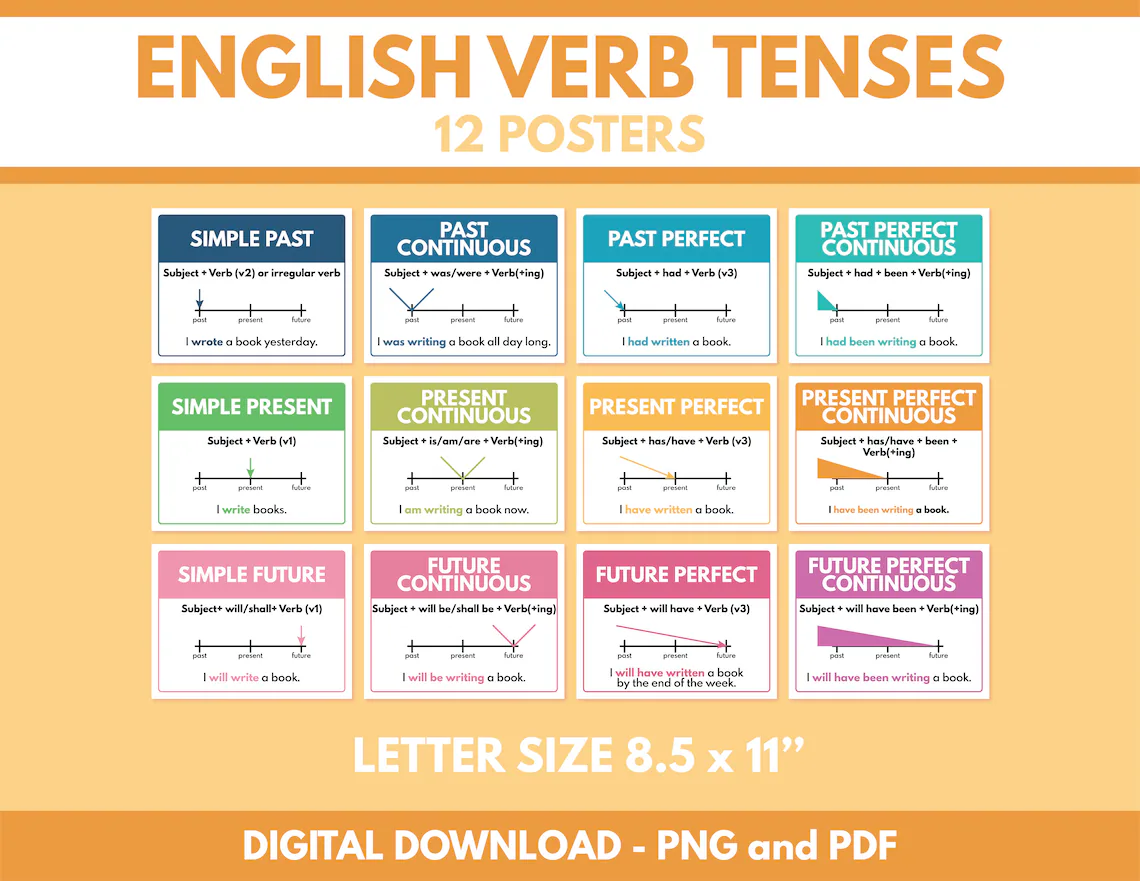Verbs are an essential part of any language, as they indicate actions, states of being, or occurrences. In English, verbs can be conjugated into different tenses to indicate when an action took place. Understanding the 12 tenses of the verb is crucial for effective communication and writing.
Each tense conveys a different time frame and is essential for conveying accurate information. By mastering the 12 tenses of the verb, you can communicate more effectively and accurately in English.
12 Tenses of Verb
1. Simple Present Tense: Used to describe actions that are happening now or habitual actions.
2. Present Continuous Tense: Describes actions that are happening at the moment of speaking.
3. Present Perfect Tense: Indicates actions that were completed in the past but have relevance to the present.
4. Present Perfect Continuous Tense: Used to describe actions that started in the past and are still continuing.
5. Simple Past Tense: Indicates actions that happened in the past and are completed.
6. Past Continuous Tense: Describes actions that were happening at a specific time in the past.
7. Past Perfect Tense: Indicates actions that were completed before another action took place in the past.
8. Past Perfect Continuous Tense: Used to describe actions that were ongoing before another action took place in the past.
9. Simple Future Tense: Indicates actions that will happen in the future.
10. Future Continuous Tense: Describes actions that will be ongoing at a specific time in the future.
11. Future Perfect Tense: Indicates actions that will be completed before another action takes place in the future.
12. Future Perfect Continuous Tense: Used to describe actions that will be ongoing before another action takes place in the future.
Mastering the 12 tenses of the verb is essential for effective communication and writing. By understanding when to use each tense, you can convey your message clearly and accurately. Practice using these tenses in various contexts to improve your English language skills.
